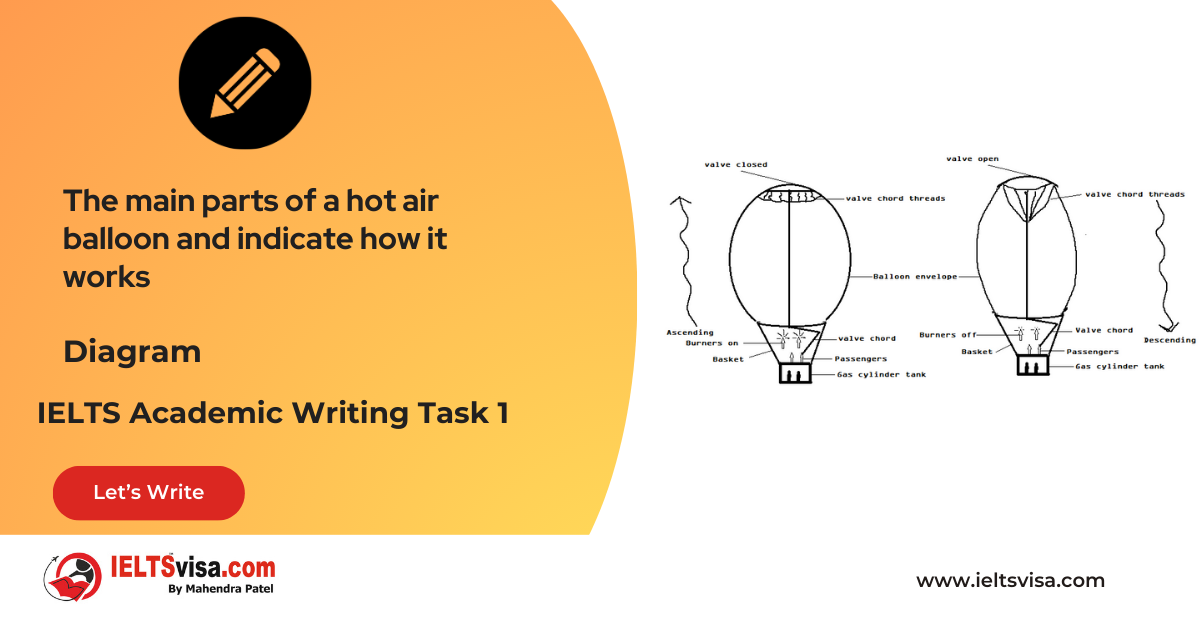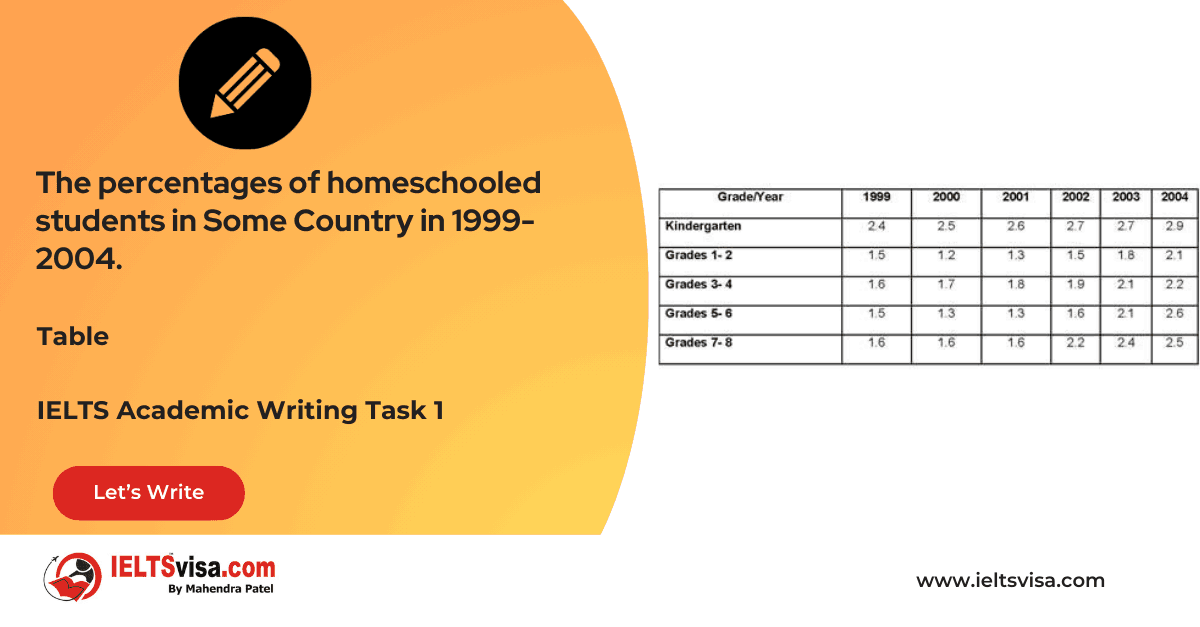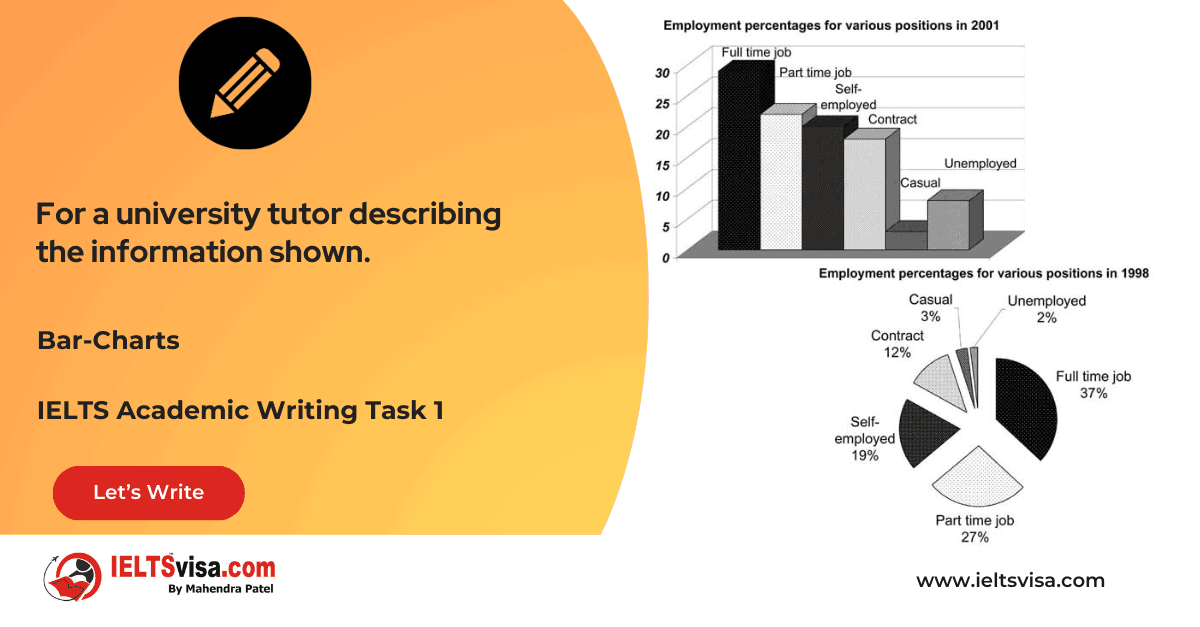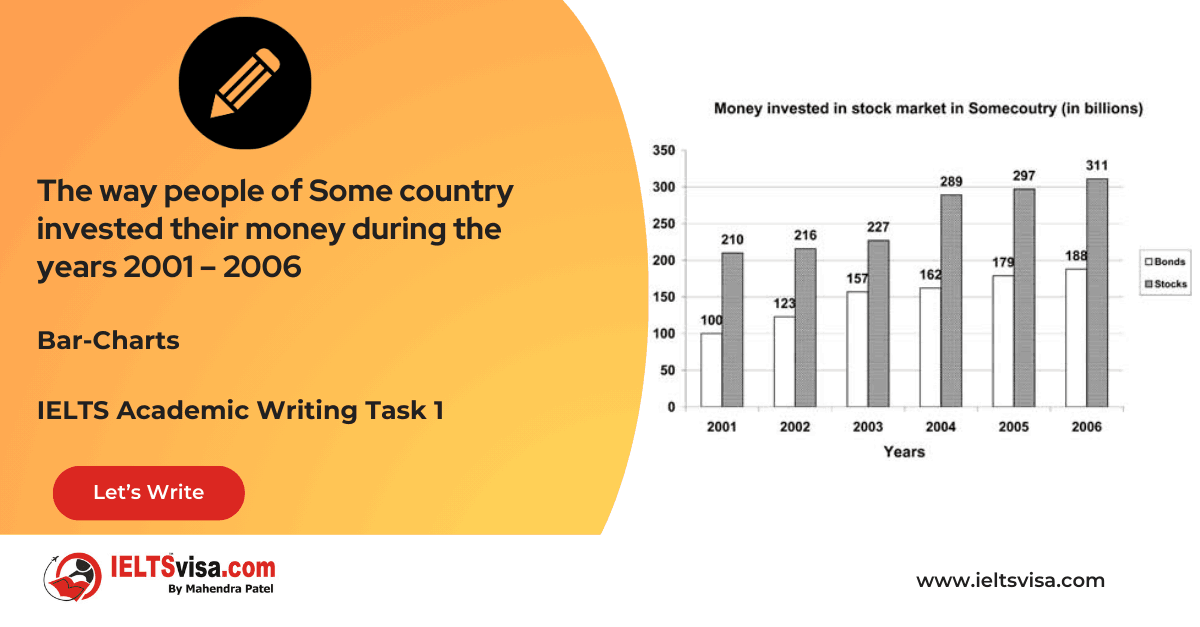Employment of students from four countries in the UK after their first courses in 2001
IELTS Academic Writing Task 1 - Table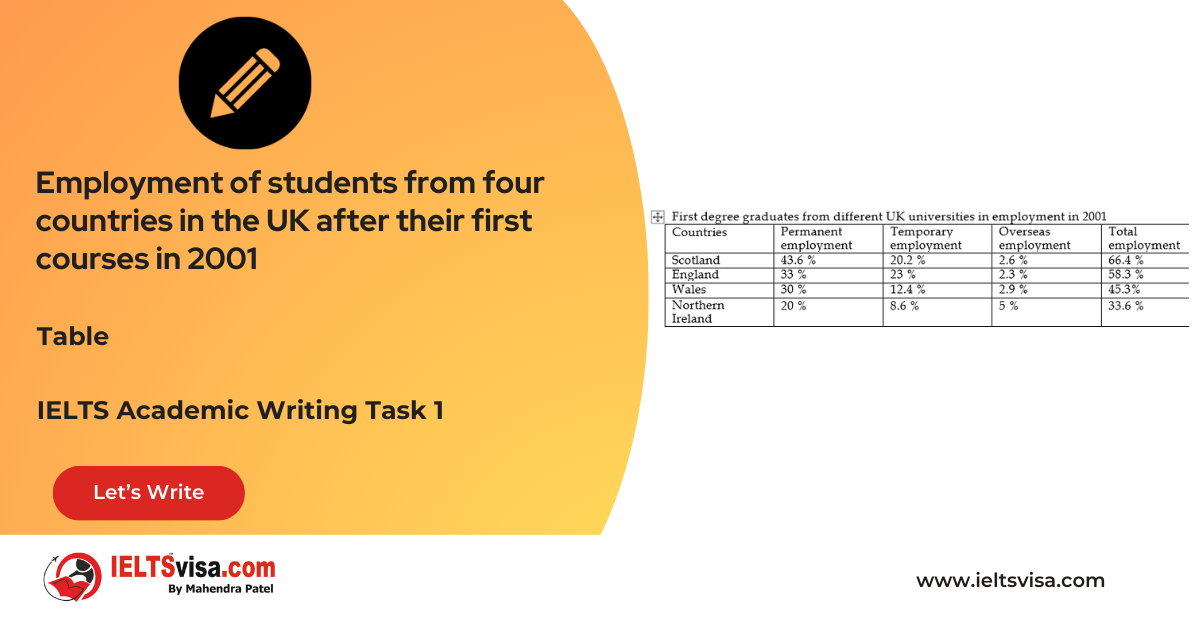
IELTS Writing Task 1 Question
The table below shows the employment of students from four countries in the UK after their first courses in 2001.

Common questions for the table
1. Graph Type: Table
2. Title: Employment of Students from Four Countries in the UK after First Degree Courses in 2001
3. What are the units of measurement?: Percentage (%)
4. Who: First degree graduates from four European countries
5. When: 2001
6. Where: UK
7. Topic: Employment status of graduates from four countries after completing their first courses
Process Showing and Trends
Comparison 1 : Employment in Scotland and England
- Details:
1. Scotland had the highest employment rate at 66.4%, with 43.6% in permanent positions.
2. England had a slightly lower employment rate at 58.3%, with 33% in permanent roles.
Comparison 2 : Employment in Wales and Northern Ireland
- Details:
1. Wales had 45.3% employment, with 30% in permanent roles.
2. Northern Ireland had the lowest employment rate but the highest proportion going for overseas jobs.
Sample Answer
The given table shows the employment status of first-degree graduates from four European countries-Scotland, England, Wales, and Northern Ireland—after completing their courses in 2001.
It is evident that Scottish graduates had the highest overall employment rate at 66.4%, with 43.6% securing permanent jobs, 20.2% in temporary positions, and only 2.6% working overseas. English graduates had a similar trend, with 58.3% finding employment, comprising 33% in permanent roles, 23% in temporary jobs, and 2.9% in international employment.
Wales had a lower total employment rate at 45.3%, with 30% of graduates in permanent positions, 12.4% in temporary work, and 2.9% in overseas jobs. Northern Ireland had the lowest employment rate among the four, but it had the highest proportion of graduates taking overseas employment at 3.7%.
Overall, Scotland led in total graduate employment, while Northern Ireland showed a unique pattern with more students seeking opportunities abroad despite its lower overall employment rate.
Top 26 Vocabularies
| Vocabulary | Meaning | Synonyms | Examples | Type |
|
Employment |
The state of having a paid job |
Work, occupation |
“The employment status of graduates varied across the four countries.” |
Noun |
|
Permanent |
Lasting or intended to last indefinitely |
Steady, long-term |
“Most graduates aimed for permanent jobs after graduation.” |
Adjective |
|
Temporary |
Lasting for a limited period |
Short-term, interim |
“20.2% of Scottish graduates were in temporary positions.” |
Adjective |
|
Overseas |
In or to a foreign country |
Abroad, international |
“Northern Ireland had the highest percentage of graduates in overseas employment.” |
Adjective |
|
Proportion |
A part or share of the whole |
Share, percentage |
“A significant proportion of graduates from England took temporary jobs.” |
Noun |
|
Graduate |
A person who has completed a degree |
Degree holder, alumnus |
“The employment rate among graduates varied.” |
Noun |
|
Status |
The condition or position of something |
Condition, state |
“The employment status of graduates was analyzed.” |
Noun |
|
Secure |
To obtain something with certainty |
Obtain, acquire |
“Many graduates secured permanent jobs after university.” |
Verb |
|
Trend |
A general pattern or tendency |
Pattern, movement |
“A similar trend was observed in England and Scotland.” |
Noun |
|
Comprise |
To consist of or be made up of |
Include, contain |
“58.3% of graduates found jobs, comprising 33% in permanent roles.” |
Verb |
|
Statistic |
A numerical fact or piece of data |
Figure, data |
“The statistics showed varying employment rates.” |
Noun |
|
Rate |
A measure of frequency or proportion |
Ratio, percentage |
“Scotland had the highest employment rate.” |
Noun |
|
Opportunity |
A chance for success |
Prospect, possibility |
“Graduates sought better opportunities overseas.” |
Noun |
|
Vary |
To differ or change |
Fluctuate, differ |
“Employment rates varied across the four countries.” |
Verb |
|
Stability |
The state of being steady and unchanging |
Security, firmness |
“Permanent jobs offer stability for graduates.” |
Noun |
|
Alternative |
A different option or choice |
Substitute, option |
“Some graduates chose an alternative career path.” |
Noun |
|
Preference |
A greater liking for one option over others |
Choice, inclination |
“Many graduates showed a preference for overseas jobs.” |
Noun |
|
Demonstrate |
To show or illustrate something |
Exhibit, indicate |
“The data demonstrates a clear gap in employment rates.” |
Verb |
|
Sector |
A specific area of employment or industry |
Field, domain |
“The private sector absorbed most of the graduates.” |
Noun |
|
Proportionate |
Corresponding in size or amount |
Balanced, relative |
“A proportionate number of graduates worked abroad.” |
Adjective |
|
Significant |
Sufficiently important or notable |
Considerable, meaningful |
“There was a significant increase in temporary jobs.” |
Adjective |
|
Fluctuation |
Irregular rising and falling movement |
Variation, shift |
“Employment rates showed fluctuations over time.” |
Noun |
|
Transition |
The process of changing from one state to another |
Shift, progression |
“Graduates faced a transition from university to work.” |
Noun |
|
Preference |
A greater liking for one alternative over another |
Favoritism, bias |
“Some students had a preference for international jobs.” |
Noun |
|
Distinct |
Clearly different or unique |
Separate, unique |
“Northern Ireland had a distinct employment pattern.” |
Adjective |
|
Allocation |
The process of distributing something |
Distribution, assignment |
“The allocation of jobs was uneven across countries.” |
Noun |

Our Books
Master IELTS Speaking Part 1
IELTS Writing Task 1 Book
IELTS Writing Task 2 Book
Practice IELTS Other Modules
IELTS Listening
The IELTS Listening test assesses how well you can understand spoken English in various contexts. It lasts about 30 minutes and is divided into four sections with a total of 40 questions. The listening tasks become increasingly difficult as the test progresses.
IELTS Academic Reading
The IELTS Academic Reading section assesses your ability to understand and interpret a variety of texts in academic settings. It is designed to evaluate a range of reading skills, including skimming for gist, reading for main ideas, reading for detail, understanding inferences, and recognizing a writer's opinions and arguments.
IELTS Speaking
The IELTS Speaking test assesses your ability to communicate in English on everyday topics. It lasts 11-14 minutes and consists of three parts: introduction, cue card, and a discussion based on the cue card topic.
IELTS General Reading
IELTS General Reading tests your ability to understand and interpret various types of texts. Here are some key areas and types of content you can expect to encounter in the reading section, along with tips for effective preparation.
IELTS Academic Writing Task 1
In IELTS Academic Writing Task 1, you are presented with a visual representation of information, such as graphs, charts, tables, or diagrams, and you are required to summarize, compare, or explain the data in your own words.
IELTS General Writing Task 1
In IELTS General Writing Task 1, you are required to write a letter based on a given situation. The letter can be formal, semi-formal, or informal, depending on the prompt. Here’s a breakdown of the key components to include in your letter
IELTS Academic Writing Task 2
In IELTS Academic Writing Task 2, you are required to write an essay in response to a question or topic. Here’s a guide to help you understand the essential elements of this task
IELTS Exam Tips
To succeed in the IELTS exam, practice regularly, familiarize yourself with the test format, improve your vocabulary, develop time management skills, and take mock tests to build confidence.
Grammer for IELTS
Grammar is the foundation of effective communication in English. Understanding tense usage, subject-verb agreement, and sentence structure enhances clarity and coherence in writing and speaking.
Vocabulary for IELTS
Vocabulary plays a crucial role in the IELTS (International English Language Testing System) exam, especially in the Speaking and Writing sections. Here’s an overview of why vocabulary is important and how it impacts your performance
RECENT IELTS SAMPLES QUESTIONS AND ANSWERS
Task 1 – Diagram – A conference hall built in 1981 and planned for 2020
20:00 Start Pause Stop [df_adh_heading title_infix="IELTS Writing Task 1 Question" use_divider="on"...
Task 1 – Table – The percentages of homeschooled students in Some Country in 1999-2004.
20:00 Start Pause Stop [df_adh_heading title_infix="IELTS Writing Task 1 Question" use_divider="on"...
Task 1 – Table – For a university tutor describing the information shown.
20:00 Start Pause Stop [df_adh_heading title_infix="IELTS Writing Task 1 Question" use_divider="on"...
Task 1 – Bar-Charts – The way people of Some country invested their money during the years 2001 – 2006
20:00 Start Pause Stop [df_adh_heading title_infix="IELTS Writing Task 1 Question" use_divider="on"...
Task 1 – Diagram – Rainwater Harvesting and Conversion to Drinking Water in an Australian Town.
20:00 Start Pause Stop [df_adh_heading title_infix="IELTS Writing Task 1 Question" use_divider="on"...
Task 1 – Column graph – Percentage of Young People Enrolled in Universities in 2000 and 2007.
20:00 Start Pause Stop [df_adh_heading title_infix="IELTS Writing Task 1 Question" use_divider="on"...

